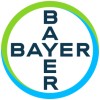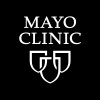
Kahook Dual Blade Ab-interno Trabeculotomy Versus ab Externo Viscotrabeculotomy in Primary Congenital...
GlaucomaCongenital GlaucomaThis prospective study aims to compare KDB ab-interno trabeculotomy to ab externo rigid probe viscotrabeculotomy in patients with PCG.

Inflammatory Biomarkers in Ocular Surface in Primary Open Angle Glaucoma or Ocular Hypertension...
GlaucomaOpen-Angle1 moreGlaucoma is a chronic optic neuropathy whose main modifiable risk factor is an abnormally elevated intraocular pressure. The aim of glaucoma treatment is to slow the progression of the disease by reducing intraocular pressure. Prostaglandin derivatives are the most effective topical drugs in reducing intraocular pressure (IOP). Among these, latanoprost was the first agent of this type to be approved for use in patients with glaucoma or ocular hypertension. These eye drops are available with and without preservatives. There are two commercial brands in our environment, Xalatan®, which contains 0.005% latanoprost and 0.2 mg/ml benzalkonium chloride (BAK) and Monoprost®, which contains the same amount of latanoprost but does not carry a preservative. The prostaglandin analog with a lower concentration of active ingredient available in Spain without preservative is tafluprost 0.0015%, commercially available under the name Saflutan®. The long-term use of hypotensive eye drops with preservatives generates changes in the ocular surface, such as instability of the tear film, conjunctival inflammation, subconjunctival fibrosis, apoptosis of the conjunctival epithelium and deterioration of the corneal surface, causing symptoms such as stinging, tearing, sensation foreign body, photophobia and blurred vision. This research will evaluate the changes in the ocular surface and in the expression of inflammatory molecules that occur in the conjunctiva in patients with a diagnosis of glaucoma and ocular hypertension who are under ocular hypotensive treatment with tafluprost, comparing it with the two commercial preparations of latanoprost. These three groups of patients will have a control group of patients with a diagnosis of ocular hypertension who will not have any topical hypotensive medication.

Study to Learn More About Safety of Aflibercept Injection in Japanese Patients With Neovascular...
Neovascular GlaucomaThis is a prospective, observational, multi-center and post-authorization safety study that includes patients with a diagnosis of Neovascular Glaucoma. The investigator will have made the decision to use Eylea for treatment. The objective of this study is to assess safety and effectiveness of Eylea using in real clinical practice. Patients will be followed for a time period of 6 months from start of Eylea treatment or until it is no longer possible (e.g. lost to follow-up). In total, 480 patients will be recruited. For each patient, data are collected as defined in the electronic case report form (eCRF) at the initial visit, follow-up visit and final visit, either by routine clinical visits (as per investigators routine practice).

MINIject Global Long-Term Follow-up Study
Open Angle GlaucomaOcular HypertensionThe study will assess the long-term (up to 5 years) safety and performance in patients with open-angle glaucoma uncontrolled by topical hypotensive medications who had previously been implanted with a MINIject glaucoma implant.

OCT Angiography in the Glaucoma Diagnosis
GlaucomaGlaucoma is a chronic degenerative disease of the optic nerve. It is the second cause of blindness worldwide and a frequent cause of irreversible blindness. In 2020, epidemic health authorities have predicted about 80 million glaucoma patients. Glaucoma can be treated by topical treatment (eye drops), laser or surgery. A premature diagnosis of glaucoma is very important to prevent irreversible blindness. Pachymetry, Optical Coherence Tomography (OCT) and visual fields exams are fundamental for the development of the glaucoma diagnosis. The severity of glaucoma is defined with Hodapp-Parrish-Andersen visual field criteria. According to these criteria, glaucoma can be classified as early (with average visual field deviation, MD, of 0 to -6 dB), moderate (MD of -6 to -12 dB) and severe (MD worse than -12 dB). The progression of glaucoma is being identified by the visual fields tests, and also by the progression of alterations in the optic nerve head. The visual fields tests are long and difficult (30 minutes). It is therefore important to create additional tests and anticipate the diagnosis, in order to avoid the irreversibility of glaucoma.

A Study of Efficacy and Safety of PHP-201 in Patients With Primary Open Angle Glaucoma or Ocular...
Primary Open Angle GlaucomaOcular HypertensionThis is a phase 3 study to confirm the efficacy in reduction of intraocular pressure and safety of PHP-201 ophthalmic solution in patients with primary open-angle glaucoma or ocular hypertension.

GATT Versus Canaloplasty (GVC)
GlaucomaOpen-AngleStudy aims to compare the effectiveness and safety profile of Gonioscopy-assisted Transluminal Trabeculotomy and canaloplasty, in order to find out if one operation is superior to the other. Both procedures are performed in patients with medically uncontrolled open-angle glaucoma. Canaloplasty is a recently newly introduced procedure, which showed encouraging results without antimetabolite usage intra- and postoperatively. Gonioscopy-assisted Transluminal Trabeculotomy is the procedure that aims the same mechanism of aqueous outflow, however is perform with ab interno approach, which comprise it to the minimally invasive glaucoma surgery techniques. Purpose of the study is to compare both surgeries concerning success rate, intraocular pressure, medication burden and complications rate. So far there is no comparison of the Gonioscopy-assisted Transluminal Trabeculotomy and canaloplasty available.

Qlaris Phase 2 Study of QLS-111 in POAG and/or OHT Patients
Primary Open Angle Glaucoma (POAG)Primary Open Angle Glaucoma of Both Eyes3 moreQlaris' Phase 2 clinical trial investigating the safety, tolerability, and ocular hypotensive efficacy of QLS-111 in primary open-angle glaucoma (POAG) or ocular hypertension patients.

Use of Micropulse Trans-Scleral Cyclophotocoagulation Laser (MP-TSCPC) for Glaucoma Patients
GlaucomaThe purpose of this study is to evaluate the clinical outcomes of the Micropulse Trans-Scleral Cyclophotocoagulation Laser (MP-TSCPC) after 1 day, 1 week,1 month, 3 months, 6 months and one year of follow-up, with the intent to evaluate the efficacy of using MP-TSCPC to treat glaucoma patients.

Pivotal Trial for a Synthetic Tissue Substitute for Concealment of Artificial Ocular Implants
Glaucoma EyeTissue BreakdownThis clinical trial will assess the clinical safety and performance of the CorNeat EverPatch device used as a tissue substitute for concealment of artificial ocular implants.
